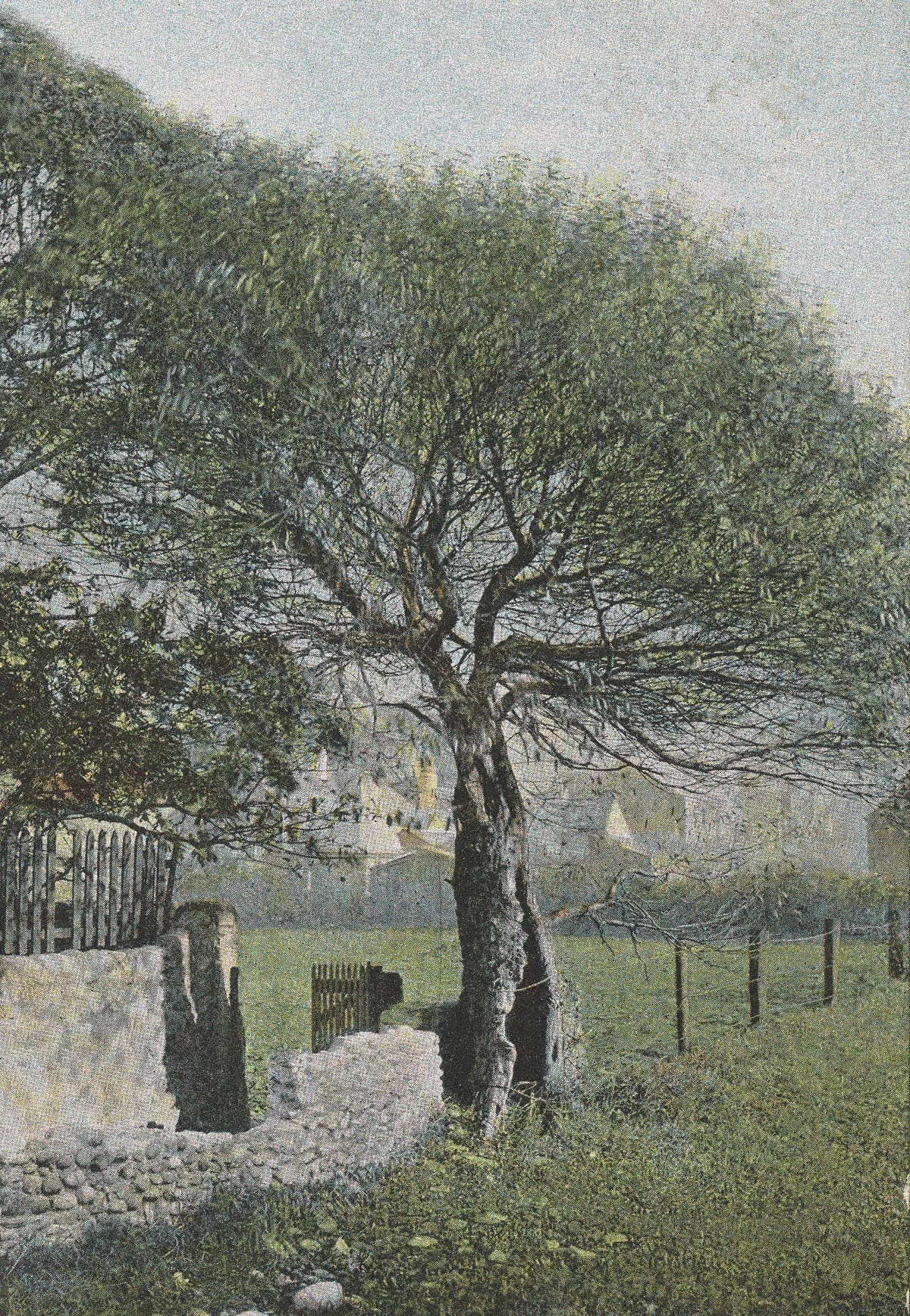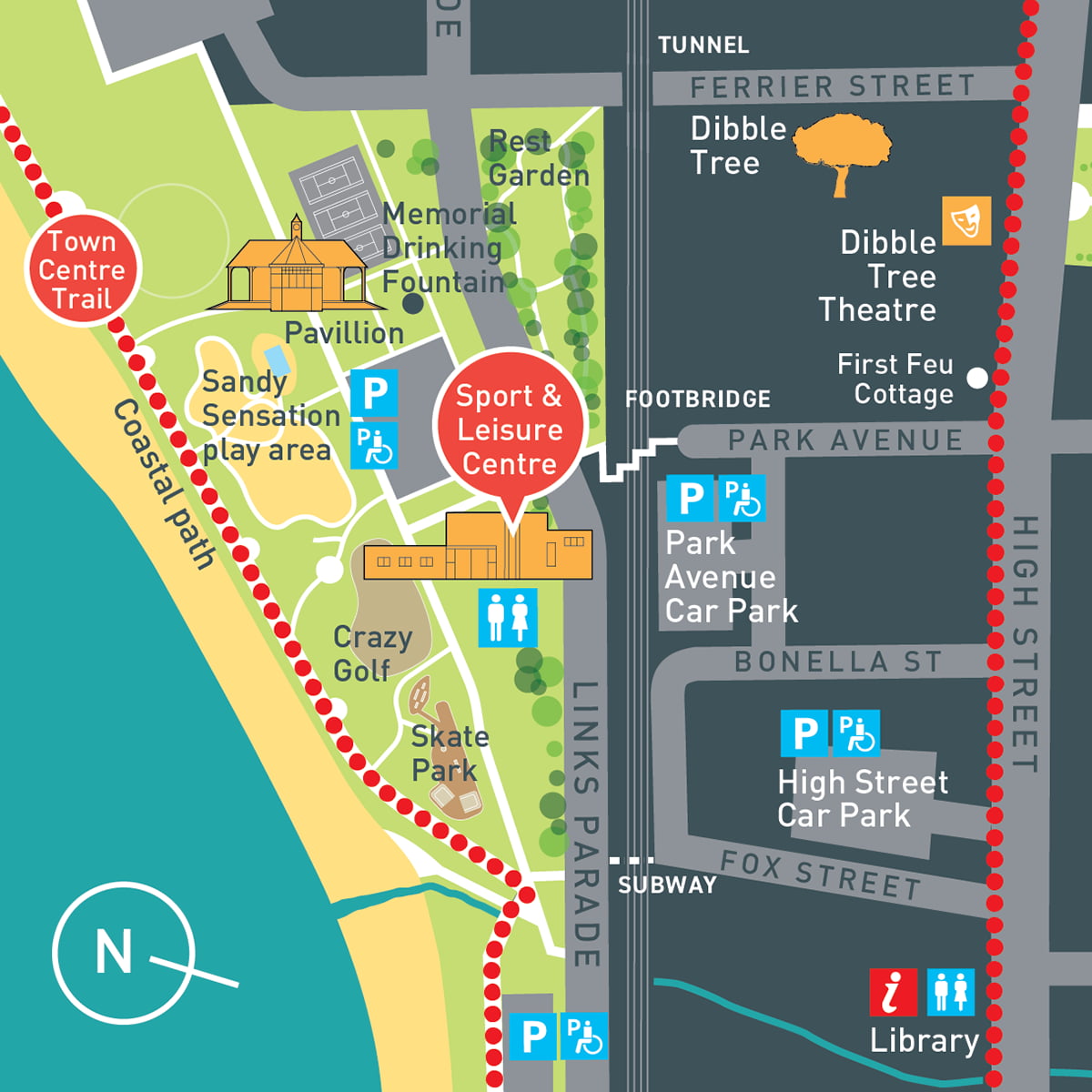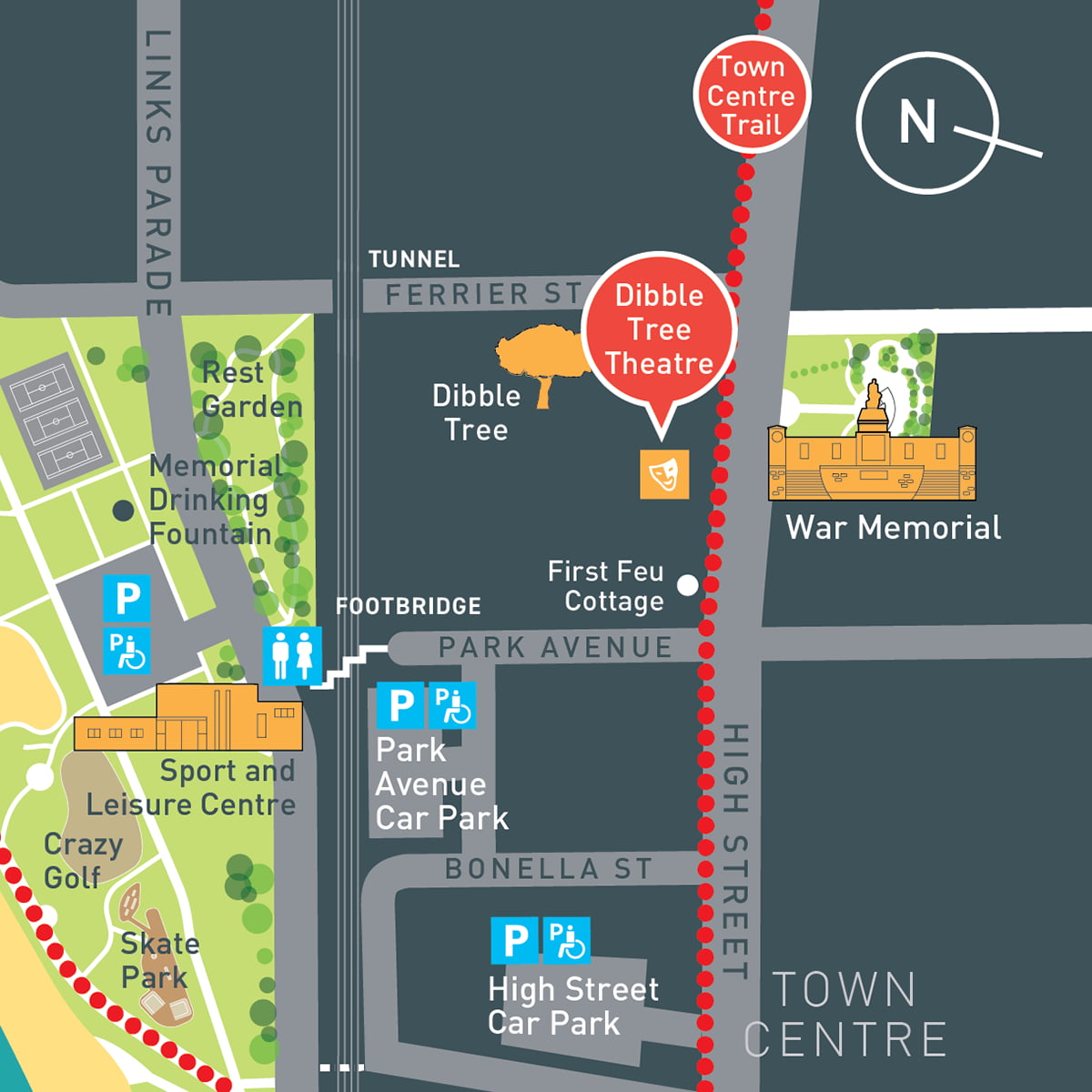

On the north side of the road opposite the top of Station Road is the Peace Garden created in memory of Doctor George McConnell (1919 - 1948) who established one of the first two medical practices in Carnoustie. He was much loved in the community and the garden with its roses and sundial was dedicated two years after his death.
The local newspaper in 1923 ran a story under the headline Carnoustie Given a Second Opportunity to Go Dry: “Local residents will remember the great ‘wet’ vs ‘dry’ battle that raged in our town during October of 1920. Public meetings galore were held by both sides and prominent speakers, MPs and social reformers spoke from public platforms. The campaign was a strenuous one. The temperance advocates did not stick to the moral aspects of their case. They explored every avenue and urged that houses would be made more happy, wages could go further and social conditions of every kind would be improved if the ‘No Licence’ clause was carried…..”
They lost the vote! Carnoustie voted in 1920 against prohibition and rejected it for a second time in 1923.
During the first quarter of the 19th century, smuggling was common along the Angus coast. It was alleged that “not a few of the older Carnoustie houses were built out of the proceeds of this damning occupation”.
Originally The Links Concert Hall, it was built by Carnoustie Burgh Council in 1934 when “the town was making the greatest of efforts to attract holiday makers from all over the country”.
The Carnoustie Gazette hailed it as “the latest line and worthy of the biggest resorts”. It went on to say that “The exterior appearance of the building has been the subject of much criticism, its severe lines leading many residents to compare it with a prison. This complaining is rather thoughtless, however although it is inevitable that there should be inevitable fault-finders.
Building authorities agree that the hall is a fine piece of modern architecture. Similar buildings on straight lines are to be found in all the leading seaside resorts in the South of England and Carnoustie is one of the first towns to introduce the idea in Scotland. It is a handsome structure of its type and it is essentially modern.”

At the junction of Dundee St and Bobbies’ Lane stands a private house which was Carnoustie’s first Police Station. The Auld Nick was built in the 1880s had three cells and an exercise yard behind. Bobbie’s lane takes its name from its heavy use by the police – Bobbies – as they were known throughout the UK. Robert Peel, the British Home Secretary, set up a professional police force for force for London in 1829. They quickly became known as “Peelers or Bobbies”. Ironically, Scotland introduced its first police force in 1800!
The theatre is not the largest in the land. It has a cosy 48 seats and all the facilities a good theatre should have. It is the life’s work of a dedicated community group that founded the amateur dramatics club, Carnoustie Theatre Club in 1969. Around a dozen local people embarked on that vision and after 22 years of being an itinerant group and with the group having expanded tenfold, they settled in the central location adjacent to the Dibble Tree. The building was formerly a joiner's workshop. The first class 'little theatre' is run by dedicated volunteers and produces a variety of full length plays, one-act plays, pantomimes and musical shows.

Barry Buddon is a Ministry of Defence training ground. It is situated immediately to the west of the golf courses. Golfers must be alert if their ball goes out of bounds in this area! The training area covers 2,300 acres (930 hectares) of which 600 acres (240 hectares) is intertidal zone. It was expanded in the late 1990s and has accommodation for 507. With all camps and facilities at maximum use about 130,000 personnel could use the training area each year. It contains the largest rifle range in Scotland. The ranges were used for the shooting events in the Commonwealth Games of 1986 and 2014. Much of the area is a Site of Special Scientific Interest (SSSI) to protect its sand dune systems. Do not venture into this area when the red flags are flying!